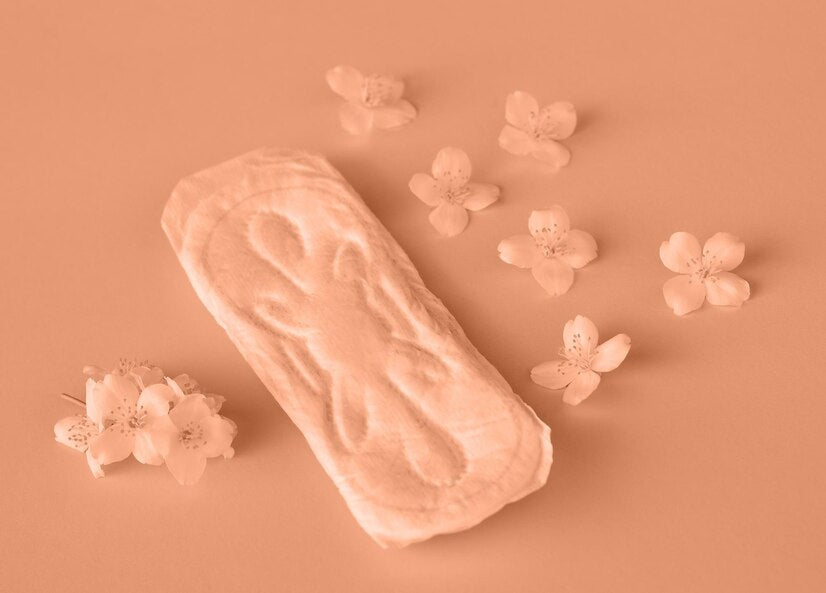When it comes to managing period care or incontinence, many people are increasingly turning to alternatives like period panties. These products have gained popularity for their convenience, comfort, and eco-friendliness. However, you may be wondering: Can period panties be used for incontinence? Are they the same as adult incontinence pads? This article will explore the differences between period panties, disposable period panties, and incontinence pads, helping you make an informed decision.
What’s the Difference Between Period Panties, Period Panties for Teens, and Incontinence Pads?
Period panties, whether disposable or reusable, are designed to absorb menstrual blood and provide comfort during menstruation. They come in various styles, sizes, and absorbency levels to suit the needs of women. Reusable period panties, typically made with absorbent fabrics, offer a sustainable alternative to traditional disposable pads and tampons. Disposable period panties are similar but designed to be worn once and discarded.
On the other hand, incontinence pads are specially designed to absorb urine and provide protection for people dealing with urinary incontinence. These pads often have a different structure and absorbent capacity compared to period panties. They are tailored for absorbing liquid leaks, typically with a higher capacity for moisture management.
While period panties are great for menstruation, they are not always engineered to handle the volume or type of fluid associated with incontinence. Let’s dive deeper into this topic to better understand these products and their suitability.

Can Period Panties Be Used for Incontinence?
The simple answer is that period panties can sometimes be used for light urinary incontinence, but they are not the ideal solution for everyone. Period panties are designed specifically to absorb menstrual blood, which is thicker and less frequent than urine. For someone experiencing mild incontinence, period panties, particularly disposable ones, could be a temporary solution. However, they may not provide the same level of protection, odor control, or moisture-locking abilities that specialized incontinence products offer.
The primary issue here is the absorbency and construction of the products. Period panties may not be built to handle the volume or speed of liquid discharge associated with incontinence. They may leak or fail to wick away moisture as effectively as incontinence pads, which are designed for this purpose.
Incontinence pads also have unique features like a higher absorption capacity and specialized materials that prevent odors and keep the skin dry for longer periods, making them more suitable for those dealing with incontinence. For moderate to heavy incontinence, you should consider using adult incontinence pads or protective underwear, which are designed for managing larger amounts of urine more efficiently.

Keep Reading to Learn More About These Products
Although period panties can sometimes work for light incontinence, understanding their limitations is important. Let’s now explore the most common questions people have about period panties, reusable period panties, and incontinence pads.
1. What are the key differences between period panties and incontinence pads?
Period panties are designed for menstrual flow, while incontinence pads are designed for urine leakage. The biggest difference is in their absorbent materials and how they manage fluids. Period panties often have absorbent layers that focus on menstrual blood, which behaves differently than urine. Incontinence pads, on the other hand, use more sophisticated moisture-locking technologies to absorb liquids rapidly and prevent leaks.
2. Can reusable period panties be used for incontinence?
Reusable period panties can handle light urinary incontinence, but like their disposable counterparts, they aren’t ideal for heavy leaks. The absorption capacity of reusable period panties tends to be lower compared to incontinence pads, which may lead to discomfort and leakage if used for heavy incontinence. For those with mild incontinence, reusable period panties could be a practical solution, especially when eco-friendliness is a priority.
3. Which product is best for overnight use?
Incontinence pads designed for overnight use are typically the best option. They are specially engineered to provide all-night protection and absorb large amounts of liquid without causing discomfort or leakage. Period panties, particularly for light flows, can be worn overnight, but they are not typically as absorbent as incontinence pads. If you’re dealing with moderate to heavy incontinence, look for overnight adult incontinence products.
4. Are disposable period panties as effective as incontinence pads?
While disposable period panties are similar to incontinence pads in design, they are primarily made to absorb menstrual blood. They may not provide the same high level of protection or odor control as incontinence pads, especially for individuals with urinary incontinence. They are better suited for light to moderate menstrual flow but could be used for mild incontinence if you are seeking a more sustainable, disposable option.
5. Can you use period panties for stress incontinence?
Period panties may work for light stress incontinence, which involves small leaks caused by sneezing, coughing, or laughing. However, they are not designed to absorb the larger volumes of urine that can result from more frequent or heavy incontinence. Stress incontinence is a condition that can vary from person to person, so it’s important to determine the severity of the issue when choosing a product.
Conclusion: Choosing the Right Product for Your Needs
In conclusion, period panties and incontinence pads serve different purposes, but in some cases, period panties can work for mild urinary incontinence. However, if you experience moderate to heavy incontinence, incontinence pads or adult incontinence underwear are your best bet for effective protection. For light incontinence, reusable or disposable period panties can be a temporary option, especially if you are looking for something more eco-friendly or comfortable. Make sure to choose the product that fits your lifestyle and provides the right level of protection based on your individual needs.

